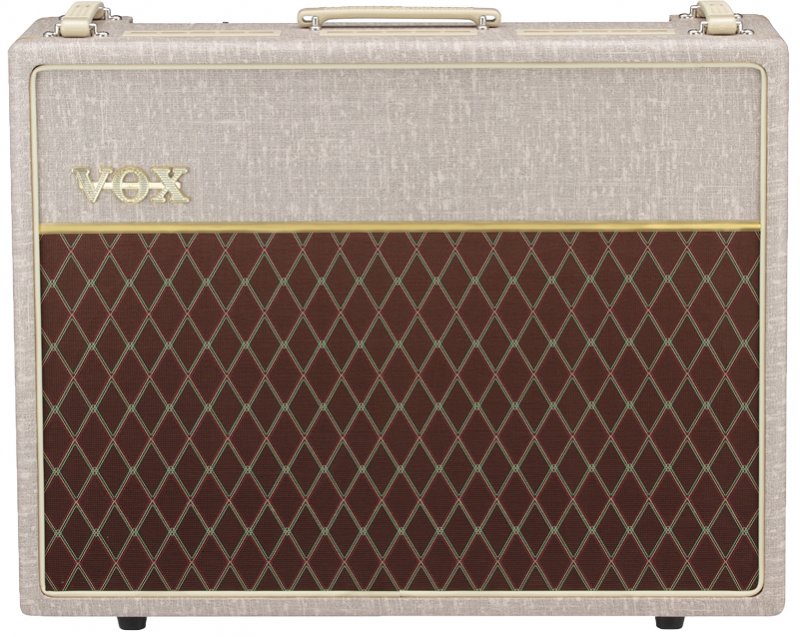Gear Review: Vox AC30 XW2X Guitar Amplifier
Gear Review: Vox AC30 XW2X Guitar Amplifier
It’s obviously a voice that some not-too-shabby guitarists have fallen for over the years; the list is literally endless but would have to include, at the high-profile end, The Edge and Brian May with his famous wall of AC30s.
That these two players coax such unique but divergent sounds from the same amp indicates that owning a Vox is merely the start of a journey into tone that will in all likelihood never end. It’s the sheer class and sweet tone of the Vox voice that makes it such a solid platform to build your own unique sound on.
So when NZM indicated there was a new hand-wired AC30 awaiting investigation, the possibility that there might not be too much new to say about this fairly basic, but well-bred workhorse, was totally over-ridden by the fact that I simply had to get my hands on it.
As it turns out the HW (Hand Wired) line has a few excellent new features aimed at taking an evergreen favourite into the 21st Century, without tampering too much with the heart and soul of the original AC30 design. While it may simply be an electronic device, you can use words like heart and soul when talking about Vox amps because, as anyone who has owned one would probably agree, you can actually get quite emotionally attached to them.
The review model Vox AC30 HW2X at a hundred bucks shy of $3000 packs the more expensive, slightly cleaner and brighter 12 Celestion Alnico Blue speakers, while the HW2 has two 12 Celestion G12M Greenbacks, known for their crunchy guitar-friendly distortion characteristics when overdriven. There’s also an AC30 HWH head, the little brother AC15 HW1X with a single Alnico Blue, the AC15 HW1 with a 12 Greenback and the V212HWX speaker cabinet with twin 12 Alnico Blues.
 They’re hand-wired on a traditional turret board in China and sure look to be the real deal, with a well-braced birch ply cabinet covered in ’60s-styled fawn vinyl. The top panel features the familiar AC30 dual Normal and Top Boost channels, both with High and Low inputs, but with the aforementioned mods adding a greater degree of control and versatility.
They’re hand-wired on a traditional turret board in China and sure look to be the real deal, with a well-braced birch ply cabinet covered in ’60s-styled fawn vinyl. The top panel features the familiar AC30 dual Normal and Top Boost channels, both with High and Low inputs, but with the aforementioned mods adding a greater degree of control and versatility.
The Top Boost section features Volume, Treble and Bass controls and the addition of a Hot/Cool switch. In Hot mode this largely (but not completely) bypasses the tone circuitry, allowing a purer signal path to the power amp and the corresponding extra gain and natural amp overdrive. You can use the supplied footswitch to engage the Hot setting as a boost for lead solos.
The Tone Cut control is placed in the power amp as opposed to the pre-amp section and works in the opposite way to what you might expect – turning it clockwise decreases the higher frequencies – and it does so very effectively.
The addition of a Master Volume is also new with this AC30, but before purists start making ‘tutt tutt’ noises, they need to know that there is a Master Volume Bypass switch so you can run it as you would a classic AC30, or with Master Volume engaged you can wind down the Master and drive the 12AX7 pre-amp tubes by cranking the channel volume – ideal for lower output requirements like bedroom jamming or recording.
Another innovation is the Op Mode switch which allows you to run the amp at half power – on two rather than four EL 84s and delivering less power amp distortion and a less harmonically dense sound.
The rear panel features an extension speaker output and external speaker output, the latter muting the internal speakers. Other than that theres only the footswitch input and power chord.
There’s no FX Send/Return which is fairly uncommon on a modern amp, theres nowhere to plug in your iPod, no headphone input or USB out, not an onboard digital effect to be seen – and most Vox aficionados will be quite content with that.
I guess enough has been written and is widely understood about what makes the AC30 such a desirable amp without my needing to add a whole lot more to the mix. Suffice to say it makes your guitar sound great, it translates every nuance of pick attack and left hand technique into something so musical and just plain superior to anything that the great majority of amps could ever hope to deliver.
As an example, while fiddling with the Hot option I played a D chord in the first position with an open A string underpinning it – it’s a chord I really like, but through the Vox I have to say it sounded better than I’ve ever heard it. It sounded different. The whole harmonic structure of the chord, the stability and balance of the amplified strings was enhanced and brought to life in a way that gave it a different colour.
That’s what great tone will do for your playing.
The Hot option will definitely make this amp a desirable commodity to players who like to let rip – the Les Paul sounded thick and searing with the gain cranked – like that scene in Mad Max 2 where he flicks over to nitrous oxide fuel and disappears over the horizon.
The only negative was the slight disappointment of having the power-on light crap out on day two of lab testing, something I have encountered once before with a similarly high-end amp. I wouldn’t assume that this has any bearing on the general reliability of the HW series, but it happened nonetheless.
Another thing I noticed while playing through the Normal channel is that if the Top Boost channel is also turned up it bleeds slightly into the Normal channel when the Normal volume is turned right down. Im not sure if thats just a quirk of the design but it did strike me as a little odd.
All in all though the 30HW2X is an extremely classy and versatile package, as you would expect from a marquee brand like Vox. You get what you pay for, and when youre paying top dollar ($2900 rrp) you should expect to get world-class performance, which is exactly what this amp delivers.
Postscript
On the topic of getting emotionally attached to Vox amps, I wanted to share a little story about what happened to my classic AC30 Top Boost, back in 1982.
I was touring with Blam Blam Blam, promoting our new album, when our van, which was loaded to the roof with PA and backline, left the road, rolled twice and slammed into a power pole on the opposite side of the road. Our bass player and his wife were pretty badly injured but Jackie the saxophonist and I (who weren’t wearing seatbelts because we were 4-up in the front) climbed out through the shattered front window, with only some bruising and a few glass fragments in our heads. Lucky.
A couple of weeks later our roadie turned up at my place with a sleeping bag containing the shattered remains of my beloved Vox. Now normally that would be that right? She’s a gonner you would probably conclude. But we’re talking about my sound lying there in pieces – I decided then and there that I would rebuild it.
I got myself some white pine and set about making a new cabinet, while a clued up friend of mine panel beat the chassis and sorted out a few broken bits and tubes, and lo and behold the AC30 lived to fight another day. In fact it went on to give me years of trouble-free service until I eventually sold it (idiot!) when I moved to Australia. Emotional attachment? I would say definitely and unequivocally, yes.

